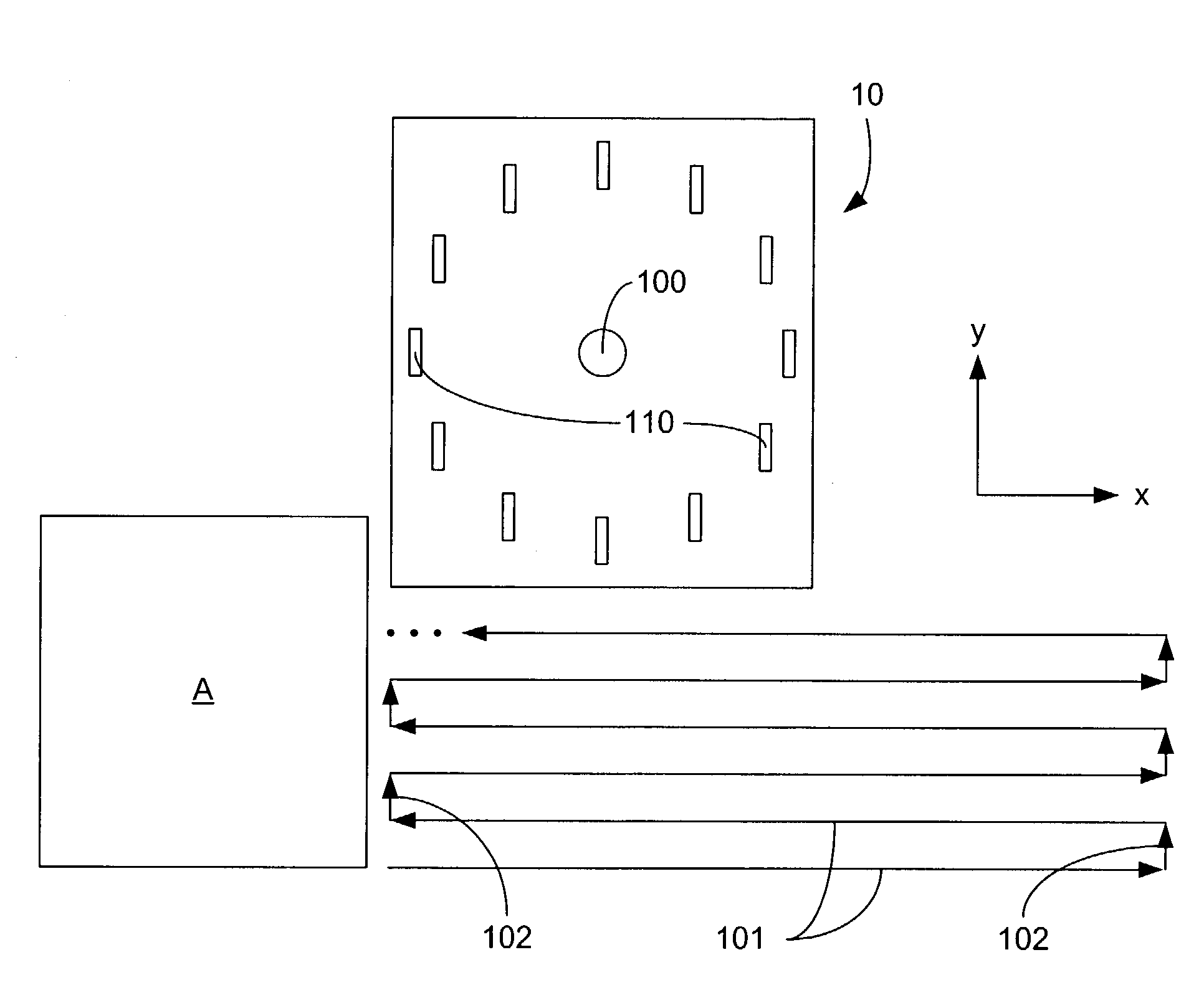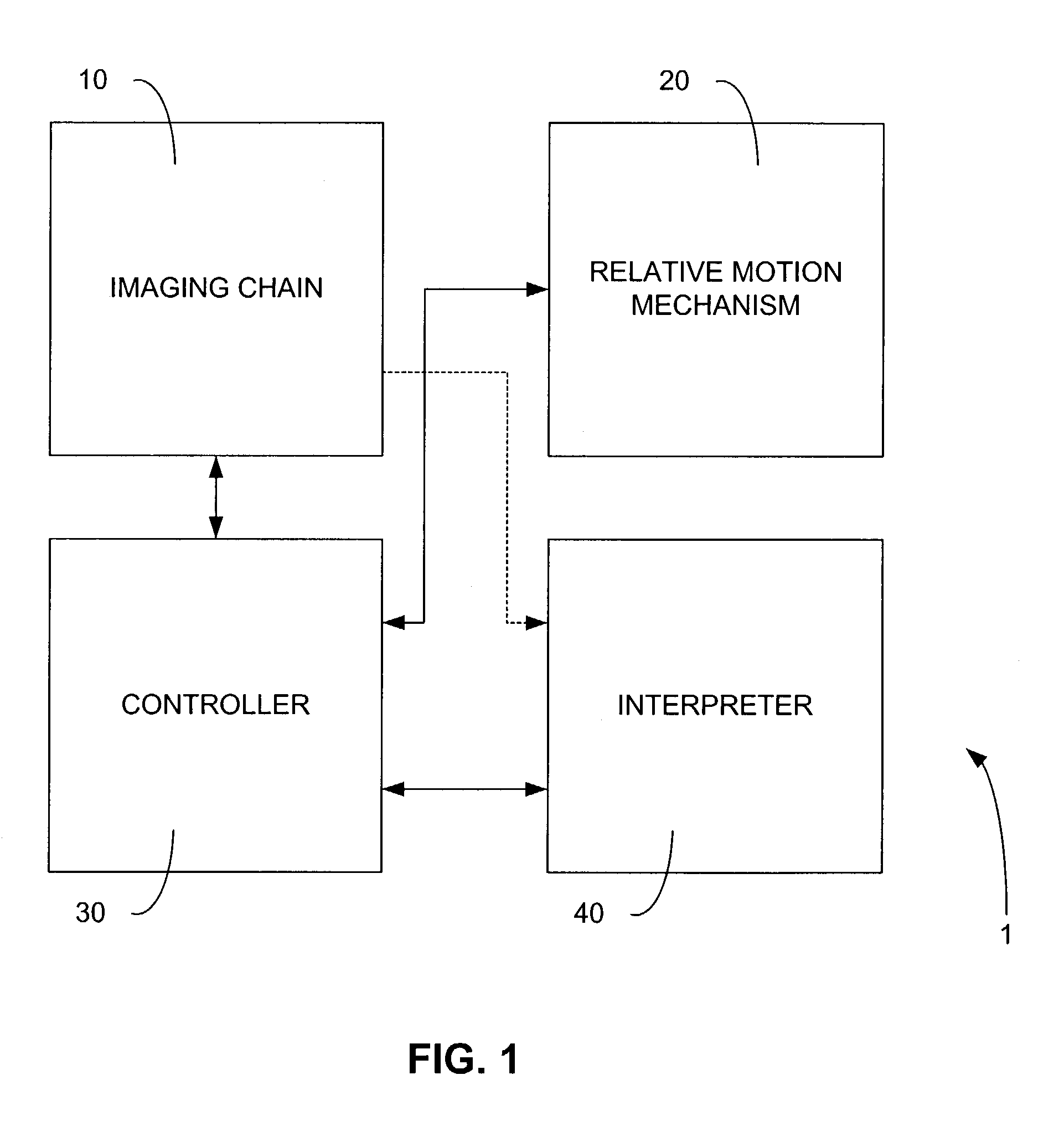Precise x-ray inspection system utilizing multiple linear sensors
- Summary
- Abstract
- Description
- Claims
- Application Information
AI Technical Summary
Benefits of technology
Problems solved by technology
Method used
Image
Examples
Embodiment Construction
[0015]An example of an x-ray inspection system 1 according to an embodiment of the invention is shown in FIG. 1. An imaging chain 10 is employed to obtain x-ray images of an article under inspection. In this particular embodiment, the article is an electronic printed circuit board (PCB). In other embodiments, any article of manufacture susceptible to inspection by the use of x-rays may be inspected by such a system. A relative motion mechanism 20 is used to maneuver the article under inspection in relation to the imaging chain 10 so that various areas of the article may be inspected. In other embodiments, the relative motion mechanism 20 moves the imaging chain 10 in relation to a stationary article. An interpreter 40 then takes the x-ray images as input to generate a series of layer images, each exposing a separate conceptual “layer” of the article. The interpreter 40 may then process such images in order to ascertain the overall quality of the article under inspection by comparing...
PUM
 Login to View More
Login to View More Abstract
Description
Claims
Application Information
 Login to View More
Login to View More - R&D
- Intellectual Property
- Life Sciences
- Materials
- Tech Scout
- Unparalleled Data Quality
- Higher Quality Content
- 60% Fewer Hallucinations
Browse by: Latest US Patents, China's latest patents, Technical Efficacy Thesaurus, Application Domain, Technology Topic, Popular Technical Reports.
© 2025 PatSnap. All rights reserved.Legal|Privacy policy|Modern Slavery Act Transparency Statement|Sitemap|About US| Contact US: help@patsnap.com



